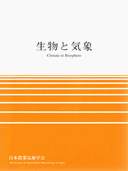Volume 12
Displaying 1-8 of 8 articles from this issue
- |<
- <
- 1
- >
- >|
-
2012Volume 12 Pages 1-5
Published: 2012
Released on J-STAGE: March 21, 2012
Download PDF (769K) -
2012Volume 12 Pages 6-11
Published: 2012
Released on J-STAGE: April 20, 2012
Download PDF (1907K) -
2012Volume 12 Pages 12-20
Published: 2012
Released on J-STAGE: May 31, 2012
Download PDF (1239K) -
2012Volume 12 Pages 36-45
Published: 2012
Released on J-STAGE: August 10, 2012
Download PDF (1110K) -
2012Volume 12 Pages 52-58
Published: 2012
Released on J-STAGE: August 10, 2012
Download PDF (1193K)
-
2012Volume 12 Pages 59-64
Published: 2012
Released on J-STAGE: November 22, 2012
Download PDF (913K)
-
2012Volume 12 Pages 46-51
Published: 2012
Released on J-STAGE: August 10, 2012
Download PDF (2397K)
-
2012Volume 12 Pages 21-35
Published: 2012
Released on J-STAGE: August 10, 2012
Download PDF (1002K)
- |<
- <
- 1
- >
- >|
